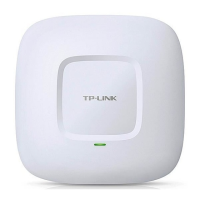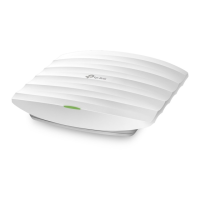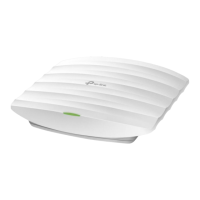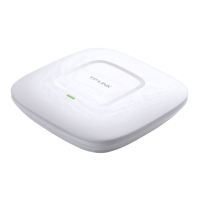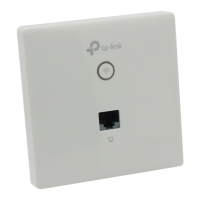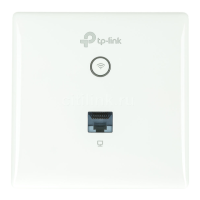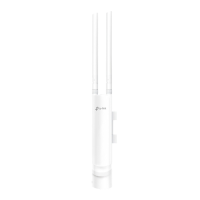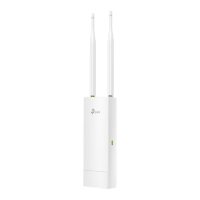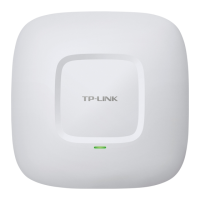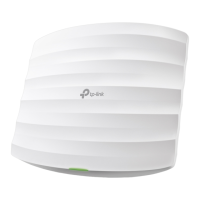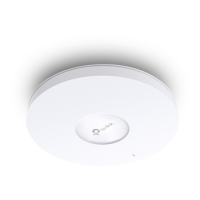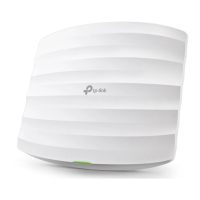23
Modify:
Click to open the page to edit the parameters of SSID.
Click to delete the SSID.
Following is the detailed introduction of security mode: WEP, WPA-Enterprise and WPA-PSK.
WEP
WEP (Wired Equivalent Privacy), based on the IEEE 802.11 standard, is less safe than WPA-
Enterprise or WPA-PSK.
NOTE:
WEP is not supported in 802.11n mode. If WEP is applied in 802.11n mode, the clients may not be
able to access the wireless network. If WEP is applied in 11b/g/n mode (in the 2.4GHz frequency
band), the device may work at a low transmission rate.
Figure 6-14 Security Mode_WEP
Type:
Select the authentication type for WEP.
Auto: The default setting is Auto, which can select Open System or Shared Key
automatically based on the wireless station's capability and request.
Open System: After you select Open System, host in the wireless network can
pass the authentication and associate with the wireless network without
password. However, correct password is necessary for data transmission.
Shared Key: After you select Shared Key, host in the wireless network has to
input password to pass the authentication, or it cannot associate with the
wireless network or transmit data.
Key Selected:
You can configure four keys in advance and select one as the present valid key.
Format:
Select the web key format ASCII or Hexadecimal.
ASCII: ASCII format stands for any combination of keyboard characters in the
specified length.
Hexadecimal:
Hexadecimal format stands for any combination of
hexadecimal digits (0-9, a-f, A-F) in the specified length.
Key Type:
Select the WEP key length (64-bit, or 128-bit, or 152-bit) for encryption.
64-bit: You can enter 10 hexadecimal digits (any combination of 0-9, a-f, A-F
without null key) or 5 ASCII characters.
